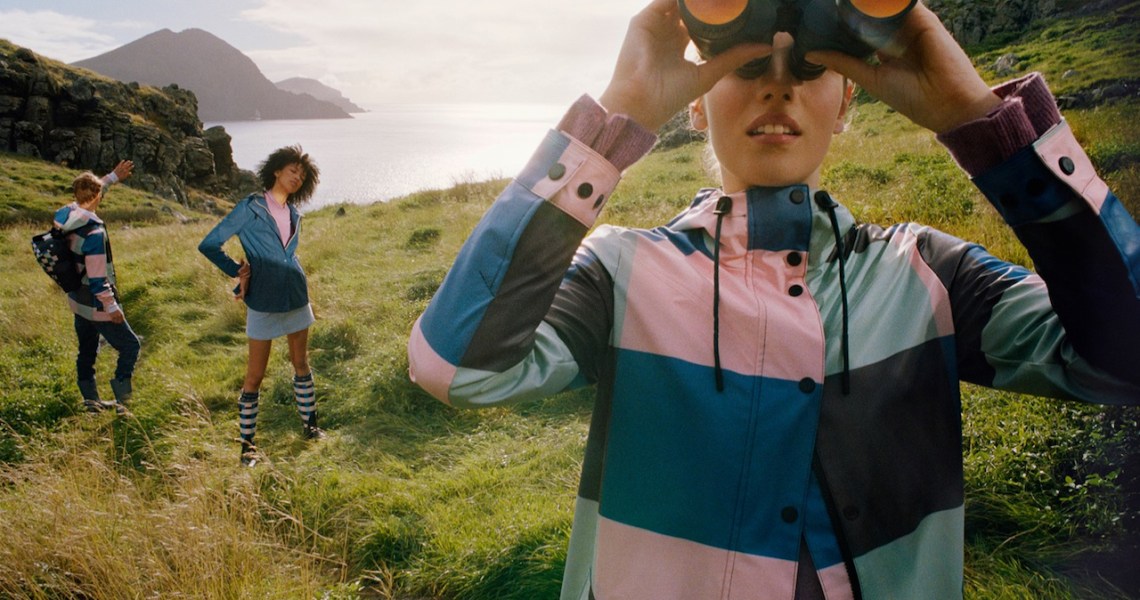British fashion brands are struggling. The uncertainty around Brexit has lead to British retailers posting big losses over the last year. Yet despite the gloom that has settled over much of British fashion, some brands have managed continued growth. For example, British heritage brand Hunter, founded in 1856 and widely known for its rain boots, posted a record revenue of nearly $150 million for the last year.
Hunter CEO Vincent Wauters owes the company’s success to a smart collaboration strategy and a diversified product offering. In the past year, Hunter has increased the number of collaborations it has done and expanded the variety of its partners along with adding several new categories.
“Brand recognition and consumer engagement has never been this high, which has further been fueled by numerous collaborations with brands, such as Target, Disney and Zappos, [all of which debuted in 2018] as well as strong key account partnerships,” said Wauters. “Furthermore, we are in a position to offer our widest range of products [to date] across different categories, having seen significant growth, in particular, in apparel and bags.”
Hunter picked collaborators from across a wide spectrum, from a high-luxury boots collaboration with Stella McCartney in March to a Peppa-Pig-branded launching in July to a less-well-received collaboration with Target. Altogether, these collaborations fueled site traffic from Google search by 50% this past year.
The brand has also expanded its offerings in the last year within newer categories including apparel and beach totes, both launched in the last five years. Sales in both the apparel and bag categories grew by 50% in the last year.
Most recently, British brands have faced major setbacks. In December, Asos posted dismal financial results, which caused its stock to crash. Just last month, Topshop was forced to file for bankruptcy in the U.S. and begin closing all 11 of its U.S. stores.
“The current backdrop of economic uncertainty across many of our major markets, together with a weakening in consumer confidence, has led to the weakest growth in online clothing sales in recent years,” Asos said in a statement at the time of its profit warning.
Ad position: web_incontent_pos1
But Hunter has actually seen most of its success in the U.S. The U.S. is Hunter’s largest market, and its local sales grew 13% year over year. Sales in Asia also grew by 13%, with concentrated growth in Japan. This comes at a time when other British brands have had to withdraw from China, thanks to diminished interest in fast fashion.
Hunter also attributes much of its positive growth to redesigning its e-commerce offerings and focusing on selling more direct-to-consumer. Over the last two years, the brand has revamped its online store with more editorial content, more detailed sizing info, curated online concept shops and a reinvigorated email strategy that more aggressively follows up with consumers who shop online. Altogether, these changes have caused DTC sales to grow by 19% to make up nearly 30% of the brand’s total earnings.
“DTC brands are infiltrating so much and taking investment dollars,” said Quynh Mai, founder of creative agency Moving Image & Content. “Everyone says DTC brands own data, but really they have a much more intimate relationship with their customer, and that’s where the real challenge is for brands.”
Hunter has also used experiential retail to build up its U.S. customer base, like recreating a scene from the Scottish highlands in the middle of Grand Central Station last year.
“The retail environment is overall changing, and we have seen a significant change in our customers’ shopping behavior, moving more and more toward e-commerce,” said Wauters. “Through the work we have done with our own e-commerce and dialogue with customers via, for example, experiential activations and brand partnerships, we have been able to succeed.”




